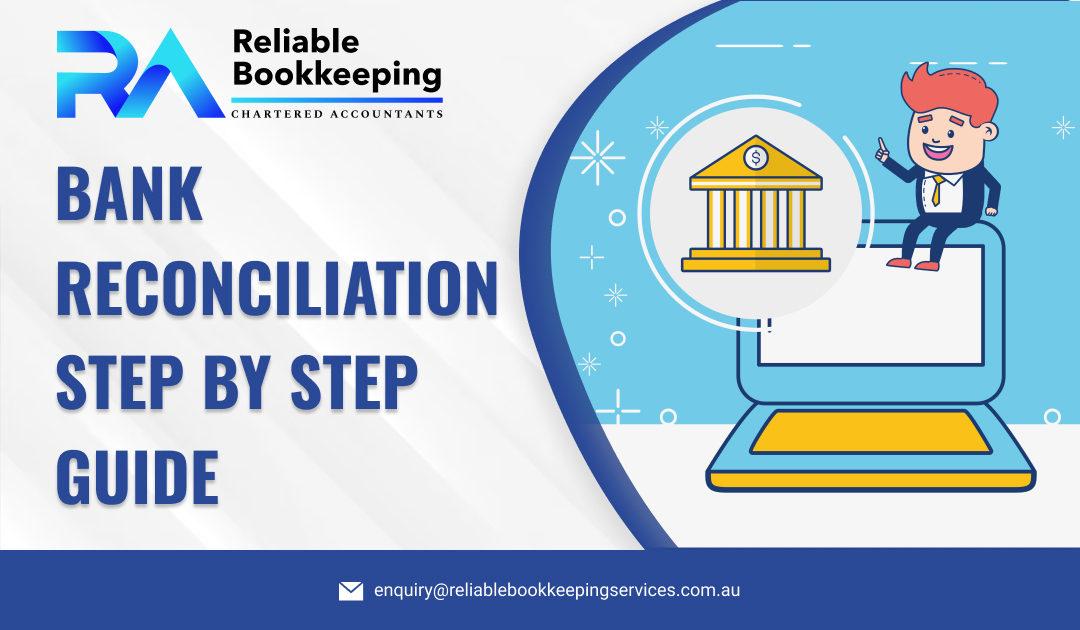In a business, small or large, there are a number of financial transactions encountered and most often, these transactions are recorded on a daily basis. With a bank reconciliation, you’ll come to know what is in your bank account and can make sure everything is going well. Continue reading this blog to know how this process works.
What is Bank Reconciliation?
A bank account reconciliation statement makes a comparison between your company’s balance sheet and bank account. Generally, the cash balance mentioned on your balance sheet must be matched with the bank statement. If there are any differences, the bank account reconciliation process will make your cash records error-free. Now, the question arises, why there might be differences between bank statements and accounting records? Well, there can be various reasons why this happens, including:
- Your company has recorded cash and cheques but they are still in transit.
- Cheques have been deposited but they have not been processed yet.
- Interest has been paid by the bank into the bank account.
- Fraud or banking errors have been encountered.
- A client doesn’t have enough funds for their cheques to clear.
Specialised accounting software can be used to reduce the chances of facing these types of issues, but it is also a good idea to reconcile your bank accounts every now and then to maintain your business books.
What is the Main Purpose of Bank Reconciliation?
There are various reasons why you should reconcile your bank accounts daily as a part of your business accounting process. You might not have the most accurate picture of your company’s finances if you don’t make sure that your records and bank account match. You can overlook frequent mistakes like multiple payments or even fraud.
The more regularly you should file a bank reconciliation statement depending on how big your organisation is. Larger companies with lots of transactions want to carry out the procedure every day or every week. Smaller companies, though, can get by with a monthly reconciliation.
How to do Bank Reconciliation?
Get bank records
You require the bank’s list of transactions. That information can be obtained from a statement, through Internet banking, or by having the bank send information directly to your accounting program. You will require both statements if you manage a current account and a credit card account.
Get business records
Open your ledger of income and expenses. This could be maintained in a spreadsheet, or an accounting software. Some accounting software uses data capture capabilities to automatically extract data from bills and receipts when they are scanned in.
Find from where you should begin
Find the last occasion when the balance in your company account and the balance in your books matched. From there, begin the reconciliation.
Check bank deposits
Ensure each deposit seems to be your income in your accounts. If there is something missing, then enter it. You have to check if it was a sale, refund, interest, or something else.
Check the income on your business books
A deposit on your bank statement must correspond with each entry. Find the reason if there is missing something.
Check bank withdrawals
It is important to record all bank withdrawals in your books. It includes bank fees that you may not have recorded yet.
Check the expenditures on your books
Every entry needs to be matched with withdrawals on your bank statement. Maybe your payment not have cleared yet, you paid using a different account or cash.
End balance
After checking all your withdrawals and deposits, your business bank balance must match your business accounts. Your end balance will be your starting point for your next bank account reconciliation.
How often should Bank Reconciliation be done?
Generally, you need to reconcile your bank accounts every time you receive a bank statement which is usually monthly. Based on the number of transactions your business processes, you may need to perform a bank account reconciliation on a daily or weekly basis. It will reduce the number of statements you need to go through each month.
Why Bank Reconciliation in Accounting is Important?
Bank account reconciliation plays an important role in accounting as it ensures that all your accounts match and there are no financial issues. It is quite a simple process of comparing your business accounts against your bank statement. However, apart from this, it can be a time-consuming task. Therefore, it is suggested to seek help from a reliable bookkeeper or accountant.
What Accounts Need to be Reconciled Monthly?
You are required to reconcile accounts payable, credit card transactions, payroll, accounts receivable, subscriptions, fixed assets, and other areas against the balance sheet or general ledger. To avoid discrepancies in business books, that’s why bank reconciliation statement is necessary.
Conclusion
The blog covers everything about bank account reconciliation along with steps to do it. Thus, make sure to reconcile your bank accounts accurately and for this, you can also get help from a Reliable Bookkeeping Services provider.

